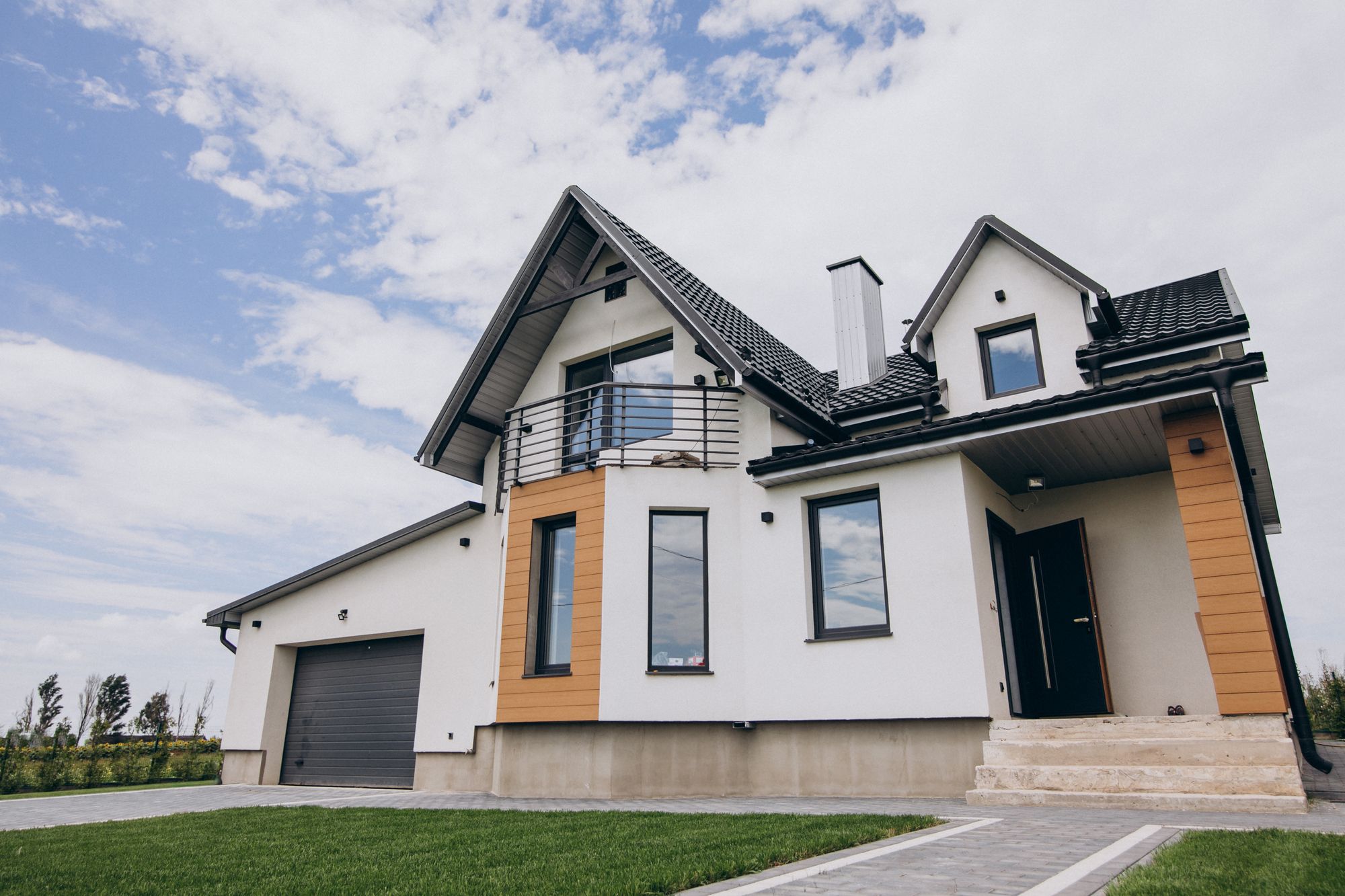Home Improvement Loans and Renovation Financing Options
Choosing the right loan for your renovation project, avoiding common mistakes and maximizing your investment are critical aspects of managing a successful renovation.

Table of Contents
Key Takeaways
- Understanding Home Improvement Loans: Financial tools for home renovations, upgrades, and repairs.
- Exploring Financing Options: Choose from personal loans, home equity loans, and government-backed options.
- Benefits of Home Improvement Loans: Flexible repayment terms and potential tax advantages.
- Home Repair Loan Requirements: Credit score, income, and loan-to-value ratio assessment.
- Comparing Interest Rates: Shop multiple lenders for optimal financing terms.
- Selecting the Right Renovation Loan: Match loan terms to your project scope and financial situation.
- Avoiding Loan Application Pitfalls: Accurate cost estimation and credit score maintenance.
- Maximizing Home Investment: Strategic upgrades for increased property value and improved living space.
Understanding Home Improvement Loans
Are you ready to transform your outdated kitchen or convert your unused attic, but unsure how to fund it? You're not alone. Home renovations can significantly boost both your living experience and property value, with homeowners recouping up to 75% of project costs according to the National Association of Realtors. But finding the right financing solution is often the biggest challenge.
This guide will help you navigate the various home improvement loan options available to US homeowners, so you can make smart financial decisions that turn your renovation dreams into reality without breaking the bank.

Types of Financing Options for Home Renovation
For US homeowners planning renovations, understanding the available financing options is crucial.
Here are the most common financing options for your home renovation project, complete with current rates and requirements:
Personal Loans
- Interest rates: 7.99% - 35.99% (2024 average)
- Typical loan amounts: $1,000 - $50,000
- Credit score needed: 640+
Example: A $25,000 personal loan at 12% APR for 5 years equals monthly payments of $556
Home Equity Loans
- Interest rates: 8.5% - 15% (2024 average)
- Loan amounts: Up to 85% of home equity
- Credit score needed: 620+
Real scenario: On a $300,000 home with $150,000 remaining mortgage, you could potentially borrow up to $105,000
HELOC (Home Equity Line of Credit)
- Variable rates: Prime rate + 2-3% (currently 8.5% - 9.5%)
- Draw period: Usually 10 years
- Credit score needed: 620+
Example: $50,000 HELOC at 9% = $450 monthly interest-only payments during draw period
Cash-Out Refinancing
- Rates: About 1-2% higher than standard mortgage rates
- Max amount: Up to 80% of home value
- Credit score needed: 580+
Government-Backed Options
FHA 203(k) Loan:
- Rates: Generally 1-2% above standard FHA rates
- Down payment: As low as 3.5%
- Credit score: Minimum 580
Example: $200,000 home purchase + $50,000 renovation = $250,000 total loan
Pro Tip: For projects under $25,000, personal loans often provide faster approval and less paperwork. For larger renovations over $50,000, home equity options typically offer better rates and tax advantages.
Note: All rates and terms are current as of 2024 and may vary by location, credit score, and lender.
Comparing Home Repair Loans
There are several types of home repair loans available, each with its benefits and drawbacks. Here's a comparison of the most common ones:
Type of Loan | Interest Rates | Terms | Benefits | Drawbacks |
Home Equity Loans | Typically 3-7% | 5-30 years | Fixed payments and lower interest rates | Puts your home as collateral |
Personal Loans | Usually 3-36% | 2-7 years | No home equity needed and quick funding | Higher interest rates for poor credit |
Home Equity Line of Credit (HELOC) | Typically 2.5-21% | 10-20 years draw period, 10-20 years repayment period | Only pay interest on what you borrow | Variable interest rates and your home is collateral |
Government-Insured Loans (FHA 203k) | Typically 2-8% | Up to 30 years | Covers purchase and renovation costs, low down payments | Strict eligibility requirements |
Credit Cards (For minor upgrades) | Usually 15-25% | Varies | Immediate access to funds | High-interest rates if not paid off quickly |
How to Qualify for a Home Repair Loan
Qualifying for a home repair loan can depend on several factors. Here's a detailed checklist of qualifications and tips on how to meet them:
Credit Score Requirements
- Conventional loans: 620+ (ideal: 700+)
- FHA loans: 580+ (some lenders accept 500-579 with 10% down)
- Personal loans: 640+ for best rates
Pro Tip: A 700+ score could save you 2-3% on interest rates
Income and DTI Guidelines
- Maximum DTI ratio: 43% (some lenders allow up to 50%)
- Minimum income: Varies by lender
Example: On a $60,000 annual income ($5,000 monthly): - Maximum monthly debt payments: $2,150 (43% DTI)
- Including new loan payment and existing debts
Home Equity Requirements
- Traditional home equity loans: 15-20% equity minimum
- HELOCs: 20% equity preferred
Calculate your equity:
Home value $300,000 - Mortgage balance $200,000 = $100,000 equity (33%)
Documentation Needed
- Last 2 years' tax returns
- Recent pay stubs (30 days)
- Bank statements (2-3 months)
- Project estimates from contractors
- Current mortgage statement
Quick Tips to Improve Approval Odds:
- Pay down credit cards below 30% utilization
- Maintain stable employment for 2+ years
- Save for a down payment (typically 10-20%)
- Get multiple contractor quotes
- Have your project plan ready
Remember: Each lender has unique requirements. Compare at least 3 offers before deciding.

Decoding Interest Rates and Terms in Home Improvement Loans
Understanding the ins and outs of interest rates and terms is crucial when considering home improvement loans.
These factors can significantly impact the overall cost of your loan and the length of time you'll be making payments.
Let's break down the key components of home improvement loan costs with current market examples:
2024 Interest Rate Overview
Fixed Rates:
- Personal loans: 7.99% - 35.99%
- Home equity loans: 8.5% - 15%
- FHA 203(k) loans: 7.5% - 9.5%
Example: On a $25,000 loan at 8.99% for 5 years
• Monthly payment: $518
• Total interest paid: $6,080
Variable Rates:
- HELOCs: Currently Prime (7.5%) + 1-2%
- Adjustable-rate loans: Starting at 6.5%
Warning: A 2% rate increase on a $50,000 HELOC could raise monthly payments by $83
Common Loan Terms and Costs
Short-term (1-5 years):
- Higher monthly payments
- Less total interest
Example: $20,000 at 9% for 3 years
• Monthly payment: $635
• Total interest: $2,860
Long-term (10-20 years):
- Lower monthly payments
- More total interest
Example: Same $20,000 at 9% for 15 years
• Monthly payment: $203
• Total interest: $16,540
Additional Costs (APR Components):
- Origination fees: 1-5% ($200-$1,000 on $20,000)
- Application fees: $25-$100
- Appraisal costs: $300-$500
- Annual fees (HELOCs): $25-$75
Pro Tip: A 700+ credit score could save you 3-5% on interest rates, potentially reducing monthly payments by $50-$100 per $10,000 borrowed.
Remember: While longer terms mean lower monthly payments, they significantly increase the total cost. Always calculate the total interest before choosing a term length.

Avoiding Common Mistakes When Applying for a Home Improvement Loan
Learn from real homeowner experiences to sidestep these costly financing pitfalls:
Credit Report Errors
❌ Mistake: Applying without checking credit reports
✅ Solution: Review reports 3-6 months before applying
Real Example: Sarah discovered a $5,000 error on her report that dropped her score by 85 points. Fixing it saved her 2.5% on her interest rate, reducing monthly payments by $75.
Loan Term Oversight
❌ Mistake: Choosing the longest term for lower payments
✅ Solution: Calculate total costs for different terms
Cost Comparison on $30,000 loan at 8.99%:
- 5 years: $620/month, total interest $7,200
- 15 years: $304/month, total interest $24,720
Difference: Longer term costs $17,520 more in interest
Rate Shopping Mistakes
❌ Mistake: Accepting first offer
✅ Solution: Compare at least 3 lenders within 14 days
Real Example: Mike saved $3,200 by comparing rates:
- First offer: 12.99% APR
- Best offer: 8.99% APR
- Monthly savings: $65
Overborrowing Issues
❌ Mistake: Adding "extra cushion" to loan amount
✅ Solution: Get detailed contractor quotes plus 10% contingency
Example Budget Breakdown:
- Project estimate: $25,000
- Contingency (10%): $2,500
- Total loan needed: $27,500
Pro Tip: Use SimpleDirect's loan calculator to compare different scenarios before applying. Multiple credit checks within 14 days count as one inquiry for your credit score.
Home Improvement Loan Calculator
Monthly Payment: $0
Total Interest: $0
Total Payment: $0
Frequently Asked Questions (FAQ) about Home Improvement Loans
- What exactly is a home improvement loan?
A home improvement loan is a type of financing specifically intended to cover the costs associated with renovations, repairs, or improvements to your home. Unlike traditional loans, these can vary in terms of collateral requirements, interest rates, and repayment terms, depending on the type of loan you choose. - Do I need to have equity in my home to get a home improvement loan?
Not necessarily. While home equity loans and HELOCs (Home Equity Lines of Credit) require you to have built up equity in your property, personal home improvement loans do not. These are unsecured loans based on your creditworthiness rather than home equity. - Are interest rates for home improvement loans higher than other loans?
Interest rates can vary widely based on the type of loan, your credit score, and other financial factors. Unsecured personal home improvement loans might have higher rates than secured loans like home equity loans or HELOCs, due to the higher risk to lenders. - Can I deduct home improvement loan interest from my taxes?
Interest on home improvement loans is generally not tax-deductible. However, if you use a home equity loan or HELOC for substantial improvements, the interest may be deductible. Always consult with a tax advisor to understand your specific situation. - How much can I borrow with a home improvement loan?
The amount you can borrow varies by lender and the type of loan. For personal home improvement loans, lenders typically offer amounts ranging from $1,000 to $50,000. For home equity loans or HELOCs, the amount is usually based on a percentage of your home's appraised value, minus any outstanding mortgage balance. - What can home improvement loans be used for?
You can use home improvement loans for a wide range of projects, from minor repairs and renovations to major constructions like adding a new room. The key is that the funds should improve the value or functionality of your home. - How long do I have to repay a home improvement loan?
Repayment terms can vary significantly. Personal home improvement loans may offer terms from 1 to 7 years, while home equity loans can extend up to 15 or even 30 years, similar to a traditional mortgage. - Is it hard to qualify for a home improvement loan?
Qualifying for a home improvement loan depends on various factors, including your credit score, income, debt-to-income ratio, and sometimes, the equity in your home. Lenders use these criteria to assess your ability to repay the loan. - Can I pay off my home improvement loan early?
Many lenders allow you to pay off your loan early without penalties, but some might charge a prepayment fee. Check the terms of your loan agreement to understand any potential penalties for early repayment. - What's the difference between a home improvement loan and a renovation loan?
The terms "home improvement loan" and "renovation loan" are often used interchangeably. However, some lenders may use "renovation loan" to refer to specific types of financing, like the FHA 203(k) loan, which combines the purchase price of the home and the cost of renovations into one loan.

Conclusion
In summary, choosing the right loan for your renovation project, avoiding common mistakes when applying for a home improvement loan, and maximizing your investment by strategically using your loan for home upgrades are all critical aspects of managing a successful renovation.
Consider your project's scale, scrutinize interest rates, loan terms, and potential fees when choosing a loan. Don't forget to check your credit report before applying and be mindful of the potential pitfalls in the loan application process. Lastly, use your loan wisely to make home upgrades that significantly enhance your home's value.
Your home is more than just a living space - it's a valuable investment. With careful planning and informed decisions, you can make the most of your renovation project. Remember, every step you take towards improving your home is a step towards improving your quality of life. So, get started with your renovation project today!
